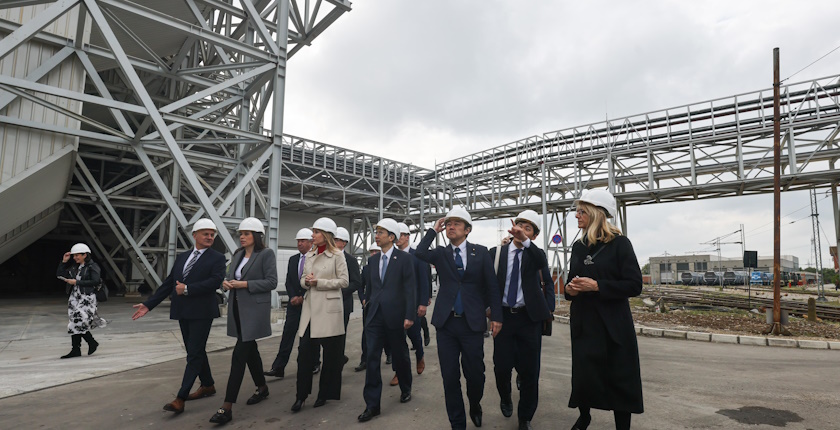
Photo: Emilija Jovanović / Ministry of Mining and Energy
After the Kostolac B coal power plant, Serbia now finally has a desulfurization system in Termoelektrana Nikola Tesla A (TENT A) in Obrenovac as well. Japan-based Mitsubishi Power was the contractor. By the end of next year, the company should complete one such facility in TENT B, also operated by state-owned power utility Elektroprivreda Srbije – EPS. Then an overall 90% of the country’s coal power output would include desulfurization.
From today, Serbia’s energy system can pride itself on a thermal power plant with environmental standards in line with modern thermal power plants anywhere in Europe, Minister of Mining and Energy Dubravka Đedović Handanović said. The desulfurization system in TENT A is worth EUR 215 million, she stated at the commissioning ceremony in the town of Obrenovac in Belgrade territory.
Sulfur dioxide emissions will be cut 30 times while the amount of released particle matter (PM) will be significantly lowered, the minister pointed out. It means that the citizens of Obrenovac, surrounding villages and the capital city of Belgrade will breathe considerably cleaner air, she asserted.
Japan-based Mitsubishi Power was the contractor. Japan International Cooperation Agency (JICA) financed the construction. Desulfurization was introduced for the production at units A3 to A6, with two absorbers. TENT A1 and A2 are scheduled to be closed by the end of 2027, almost six decades since they were built. The project in Serbia’s largest thermal power plant began almost seven years ago.
Pumped storage hydropower plant Bistrica to be what TENT A is for Serbia today
The commissioning ceremony was also attended by a delegation from Japan.
TENT B in Ušće near Obrenovac is introducing the same technology. The desulfurization system in coal power plant Kostolac B was the first project of its kind in Serbia. It got its operational permit in January of last year.
Mitsubishi Power, earlier known as Mitsubishi Hitachi Power Systems, previously completed the same job in the Ugljevik coal-fired power plant in neighboring Bosnia and Herzegovina.
Serbia is in talks with the Government of Japan and JICA as they are interested in building the Bistrica pumped storage hydropower plant, Đedović Handanović noted. “What TENT A is today for Serbia, in the sense of the security of supply, is what PSHPP Bistrica will be for us in the decades ahead, which is why for this new project we are looking for reliable partners in the world, ones that can secure the technology, affordable financing, efficiency as well as the highest environmental standards,” she underscored.
SO2 emissions in TENT A are dropping to under 200 milligrams per cubic meter, according to officials. The legal limit in Serbia is 400 milligrams. The facility will release less than 20 milligrams of PM particles per cubic meter, the utility has estimated.
Mitsubishi to complete its fourth coal plant desulfurization system in Western Balkans by end-2025
Acting Director of EPS Dušan Živković, who spoke at the event, said at the event that a desulfurization system in TENT B would be finished late next year. It will enable the company to completely tackle the issue with harmful emissions from the Termoelektrane Nikola Tesla (TENT) complex and Kostolac B. The three facilities account for 90% of coal power produced in Serbia, he added.
The units utilize the wet desulfurization method. The lime milk solvent is sprayed in absorbers-scrubbers to take in the SO2 from flue gas, resulting in the creation of gypsum. The material has widespread applications, mostly in the construction industry.


















Be the first one to comment on this article.